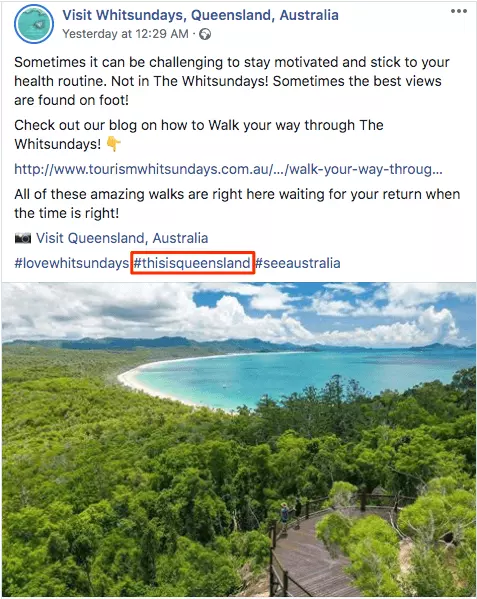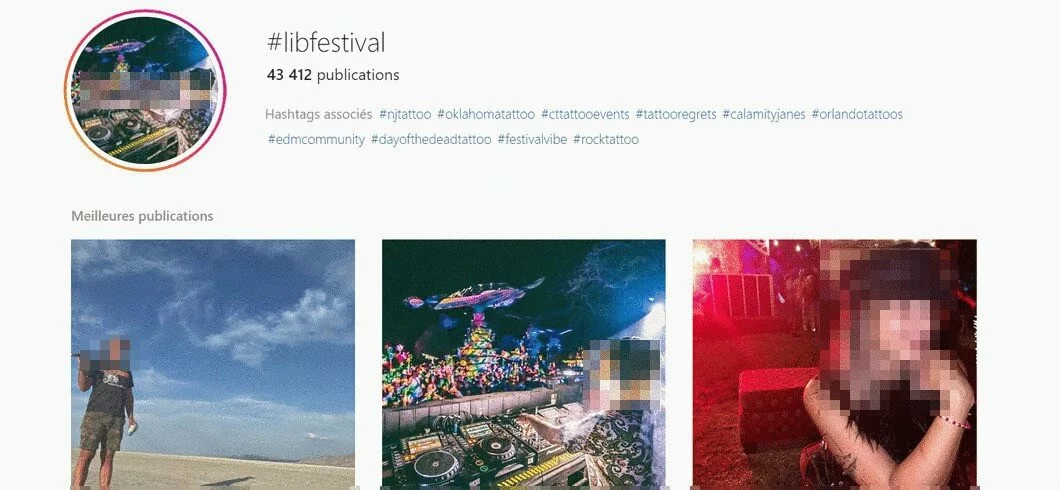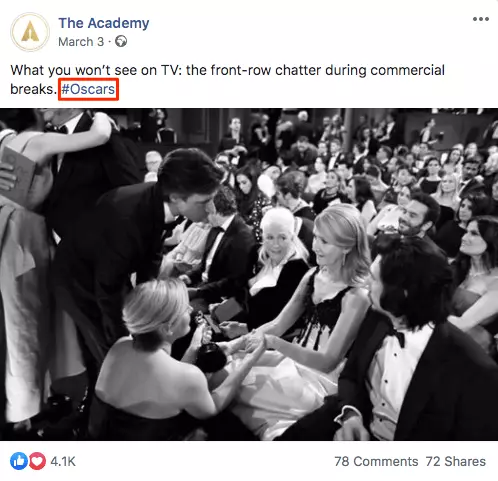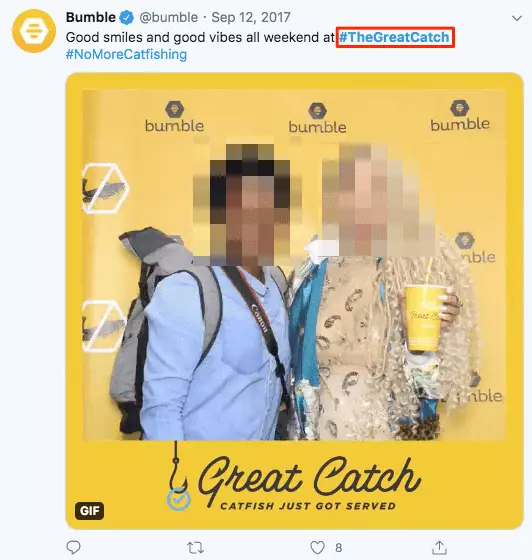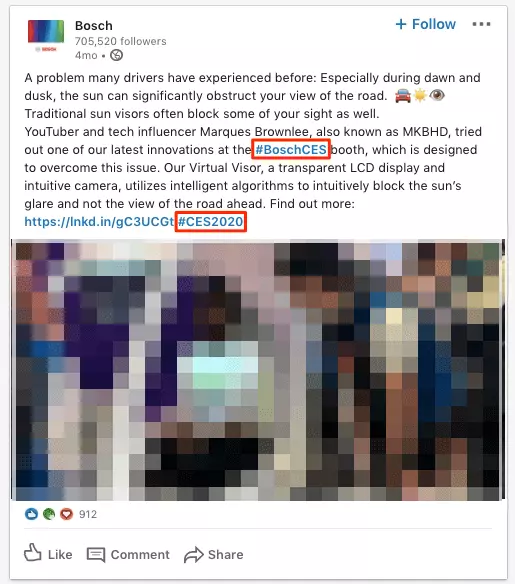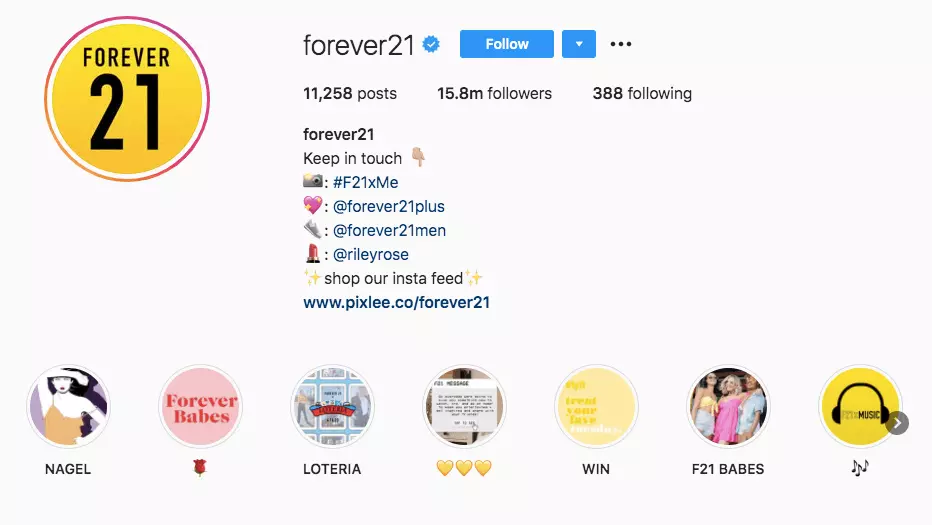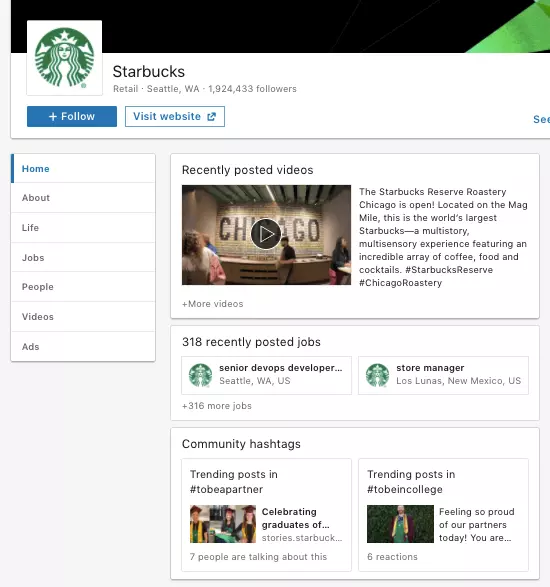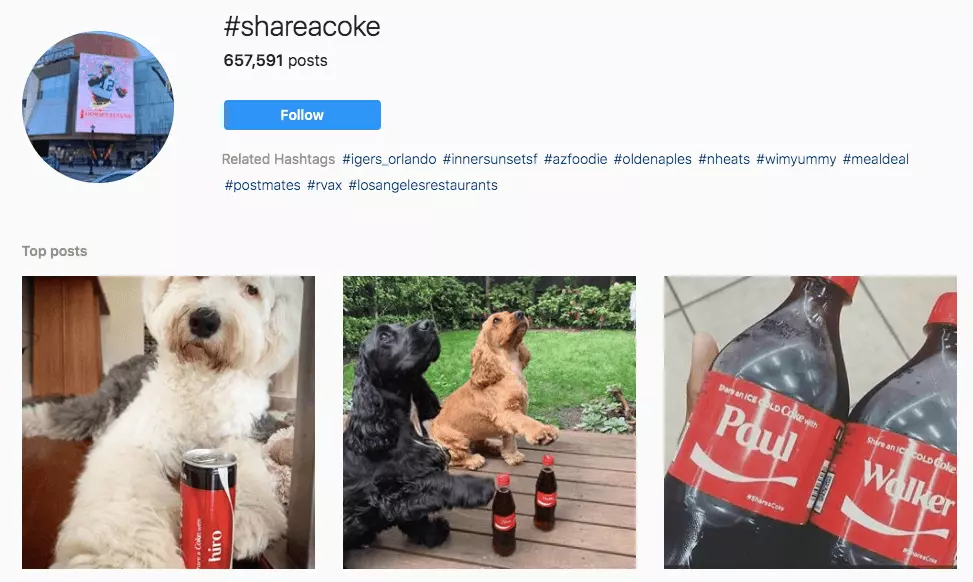Hashtag marketing: increase reach and interaction on social media
Starting in 2007, the microblogging platform Twitter popularized hashtags by making them a basic feature. Now, over a decade later, it’s hard to imagine the internet without the nifty pound symbol (also called the number sign), which is used for tagging across all major social media channels. Not too long afterwards, hashtag marketing surfaced: a strategy whereby companies use hashtags to increase the reach of their content and maximize interactions. Keep reading to find out more about this form of marketing and how you can successfully integrate a hashtag campaign into your social media marketing mix.
What is hashtag marketing?
As its name suggests, the fundamental element of hashtag marketing is the hashtag. Hashtags are keywords that are marked with a pound symbol at the beginning. Tagging posts in this way enables users to search websites for the content or topics that are interesting to them. And using the right hashtags can significantly increase the reach of your posts.
Hashtag marketing has proven handy in the implementation of guerilla marketing strategies, because there’s always the possibility that a hashtag could go viral. Observing hashtag trends also allows companies to keep tabs on which topics are currently of interest, and can use this information to develop an appropriate content strategy.
Making the most of hashtags: how does hashtag marketing work?
Implementing a successful hashtag marketing strategy requires comprehensive keyword research. Depending on the nature of the campaign and your goals, you’ll want to consider using existing hashtags and creating new ones. Usually, a combination of various hashtags makes for a successful marketing strategy. In general, hashtags can be categorized as follows:
- Popular hashtags have a large reach, but will put your content in competition with a large number of other posts.
- Trending hashtags about topics that are currently relevant or popular give you the chance to enter a wider discussion.
- Newly created hashtags have a direct connection to your company and increase the visibility of your brand.
Hashtag marketing has become an important part of most social media strategies and is used across channels ranging from Twitter and Facebook to LinkedIn.
Hashtag marketing examples: how it works in practice
Not all hashtags are created equal. Different types of hashtags can be used to achieve different goals within your hashtag marketing strategy. Some keywords serve to increase the reach of your posts, and some improve your brand’s visibility. Next, we’ll introduce you to three popular types of marketing hashtags and show examples of how companies have successfully integrated them into their posts.
Brand hashtags: individualized and unique
Some large companies have created their own online marketing hashtags. These hashtags are usually short, easy to remember, and contain the name of the company or brand. Sometimes customers even develop the right brand hashtag themselves, which the company then makes use of. This increases the interaction rate for the company and motivates its fans to use the hashtag as well. Of course, it also automatically increases the reach for those posts alongside brand awareness.
Brand hashtags on Instagram
Facebook’s daughter platform Instagram has become an essential marketing and communication channel for companies. As one of the most important social media platforms, Instagram offers companies the chance to advertise their products to a wider audience. Posts can be tagged with up to 30 hashtags each, a comparatively generous number, meaning that brand hashtags are almost always used.
Example: The clothing brand Stay Cold Apparel boasts about 250,000 followers on Instagram. The company created several brand hashtags using its name, such as #staycold, #staycoldapparel, and #staycoldfit. Although the company itself has shared some 3,700 posts, there are over 48,000 posts on Instagram with the hashtag #staycold. This shows that the community has adopted the hashtag and increased the reach of the brand further.
Brand hashtags on Facebook
Having your own page on Facebook is essential for most companies. However, in contrast to Instagram, hashtags are rarely used on Facebook – mostly because they aren’t as effective here. Facebook users rarely search for content using hashtags. So when hashtags are used, it’s for a very specific purpose.
Example: One example of a successfully implemented brand hashtag on Facebook is #thisisqueensland. The tourism umbrella organization “Tourism and Events Queensland,” which works for the Australian state of Queensland, regularly shares beautiful photos of Queensland on its page. They then call on tourists to share and tag their own vacation photos, which in turn helps increase the organization’s reach.
Brand hashtags on Twitter
On Twitter, each post (tweet) is limited to 280 characters. In comparison, Instagram allows 2,200 characters per post. This means that companies limit their use of brand hashtags on Twitter and try to be as efficient as possible with them.
Example: Samsung creates its own hashtags using the names of its products. This way, the keywords can be built into the tweet in a natural way. For the release of the Samsung Galaxy S7 2016, for example, the company used the hashtag #TheNextGalaxy. With this hashtag campaign, Samsung increased user interaction, encouraged communication about the new product, and boosted its brand visibility.
Brand hashtags on LinkedIn
LinkedIn first introduced hashtags in 2013, and then scrapped the feature later the same year. In 2016, they re-introduced the tagging function, at first exclusively for the mobile version and finally for the desktop version. It seems here to stay now. Just like on Twitter, most posts contain only one or two hashtags.
Example: Nike implemented its 30-year-old “Just do it” campaign on LinkedIn with a hashtag. Since the emergence of social media channels and the use of hashtags, users across all platforms have posted their own content using the hashtag #JustDoIt.
Event hashtags: time sensitive hashtag marketing for events
Event hashtags have a relatively short lifespan in comparison with brand hashtags. As you can probably guess from the name, event hashtags are used for either one-time or recurring events. They are normally used before an event actually takes place, as companies spread the word about it using the hashtags. At the event itself, there’s a good chance that visitors use the hashtag to post live from it. You can also effectively use event hashtags if you’re not organizing the event.
Event hashtags on Instagram: hashtag marketing example
The organizers of the tech conference Collision Conference called the hashtag #collisionconf into life. Shortening the event name makes this hashtag even catchier. Another comparable example is the hashtag #LIBfestival, which shortens the actual name of the Lighting In A Bottle Festival.
Event hashtags on Facebook: hashtag marketing example
The Academy Awards are one of the most important events of the year in the film industry. On the official Facebook page of The Academy, the organizers of the award ceremony use the short and simple event hashtag #Oscars.
Event hashtags on Twitter: hashtag marketing example
The dating app Bumble hosted an event to promote a new feature meant to prevent the use of fake profiles (catfishing). The event was called The Great Catch, and users were encouraged to use the special event hashtag #TheGreatCatch, as well as the more general hashtag #NoMoreCatfishing.
Event hashtags on LinkedIn: hashtag marketing example
Every year, the electronics trade show CES takes place in Las Vegas and draws worldwide attention. Companies like Bosch took advantage of the event hashtag #CES2020 to increase the reach of their posts. In addition, they created their own company-specific hashtag for the large event, #BoschCES.
Community hashtags: calling out to the online community
Community hashtags are similar to brand hashtags and are mostly used by large companies and well-known brands. These hashtags call on the fans of a company or brand to post their own content and tag the brand. This strengthens the connection that the customer feels with the brand and increases brand awareness. These online marketing hashtags are also an important tool for word-of-mouth marketing. Some companies share user-generated content on their own page, which provides users with extra motivation for using the hashtag.
Community hashtags on Instagram
The clothing company Forever21 calls on its users to post their own photos with Forever21 clothes using the hashtag #F21xMe. The company displays this hashtag in its Instagram bio. Selected user posts are then shared on the official Forever21 channel, giving users an extra reason to use the hashtag. Thanks to this strategy, there are over 800,000 posts with the hashtag #F21xMe.
Community hashtags on Facebook
The Canadian activewear retailer lululemon Athletica has a large fanbase, as evidenced by its Facebook page with over 2 million followers. The company is responsible for the community hashtag #thesweatlife, which created a feeling of cohesion among community members while simultaneously promoting its online sports classes.
Community hashtags on Twitter
The toilet paper brand Charmin used a striking hashtag on Twitter to achieve a significant social media presence. With the hashtag #TweetFromTheSeat, users can make it known – with a dose of humor – that they’re using their phone in the bathroom.
Community hashtags on LinkedIn
The world-famous franchise Starbucks strengthens its relationship with its partners and employees using hashtags like #tobeapartner and #tobeincollege. These hashtags are aimed at existing and future employees.
Community hashtags are a very efficient way to establish or strengthen relationships with customers. LinkedIn has created its own index to keep track of the success of social selling.
A success story: #ShareACoke by Coca-Cola
The “Share A Coke” campaign by Coca-Cola is one of the most successful marketing strategies carried out by the company. The beverage manufacturer printed 250 popular first names on the labels of its bottles, and then encouraged its customers to look for the names of their friends or family members and share the drink with them. Building a community feeling and personalizing their product were major factors in the success of the campaign.
Customers followed the call to #shareacoke and posted their personal photos and stories on various social media channels. Over 500,000 photos were shared with the hashtag in the first year alone. Today, there are over 650,000 posts with #shareacoke on Instagram. Coca-Cola gained 25 million fans on Facebook during the campaign. And though the campaign has officially ended, fans are still using the hashtag.
Tips for a successful hashtag marketing strategy
The strategic use of hashtags has become a fixture among social media marketing strategies. Especially on Instagram and Twitter, hashtag marketing can significantly increase the reach of your posts. Keep reading to find out how you can effectively implement hashtags as a part of your marketing strategy.
Hashtag research
The first step is to perform thorough research on fitting hashtags. Important information includes how many posts are tagged with your hashtag and how often it is used. This research should be carried out continuously. That way you can be sure to stay on top of trends and relevant topics.
Recognize and use trends
What underlies most hashtags are trends, which are often short lived. Hashtags that are based on trends offer the chance for large reach and a rapid increase in followers.
Know the competition and your target audience
Part of comprehensive hashtag research is an analysis of your competition. Which hashtags are used by companies with similar target audiences? Interaction rates for competing posts can provide insights into whether a company’s strategies are worth drawing inspiration from.
Use a variety of hashtags
There’s no final word on what makes for a successful hashtag marketing strategy. However, the combination of diverse hashtags tends to produce good results. Most companies combine general, popular hashtags with hashtags that are specific to their brand and company-specific keywords.
Cooperate with influencers
Influencer marketing can provide a chance for new companies to quickly increase their reach. In order to implement hashtag marketing in cooperation with influencers, be sure to develop a targeted campaign, a shared communications strategy, and branded hashtags.
Define your goals and measure your success
Defining your goals makes it possible to measure the success of a campaign and adjust your strategy if need be. Common goals of a hashtag campaign include increasing reach, growing the number of links to a site or account, and expanding the number of website/shop visitors. In order to evaluate your success, simply compare these numbers before and after a campaign. Keep in mind, however, that hashtag marketing is a constantly changing area and requires continuous adjustment of your strategy to the interests of users.
On Instagram, the analysis tool Insights can give you valuable information about the success of your campaign. We introduce the most important features and alternatives to this tool in our article “Instagram statistics – KPIs and analysis tools”.



